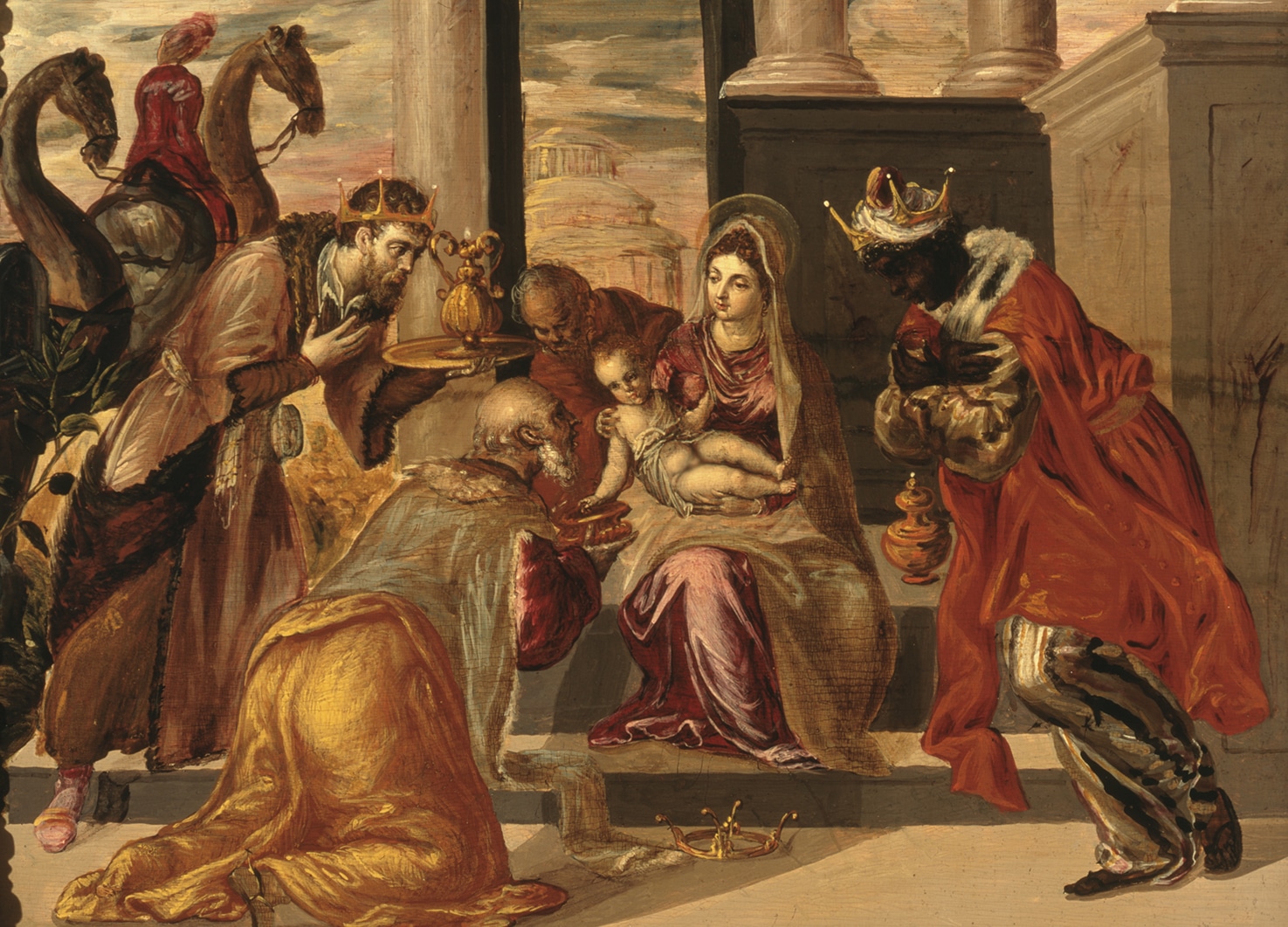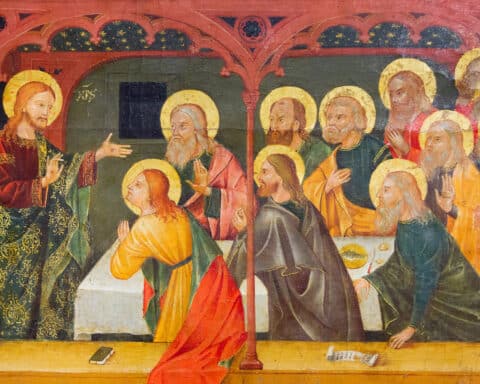In his letter to the Ephesians, St. Ignatius of Antioch describes the events and circumstances of Christ’s birth as “trumpet-tongued secrets … brought to pass in the deep silence of God.” Ignatius’ image is truly beautiful and a worthy description of everything we contemplate on Epiphany.
On Epiphany, the secret Truth of this small baby is trumpeted abroad by the simple brilliance of a star. Here is our God and King, the Creator of the stars and the human heart. He comes into the world quietly, born in a stable. Worldly kings arrive to behold him, kneeling in adoration, and laying aside their own golden crowns.
And yet, I find it interesting that the Scriptures for this Sunday don’t only emphasize moments of revelation and presence, but they also speak of seeking. Both the Old Testament and New Testament passages remind us that we are always seeking Christ: “Raise your eyes and look about” (Is 60:4); “Go and search diligently for the child” (Mt 2:8). Such coincidence of revelation and seeking is intrinsic to the life of faith. Desiring the one whom we behold on Epiphany, we long to know him better and better; to kneel closer and closer to his crib.
St. Paul put it this way in his letter to the Ephesians: “The mystery was made known to me by revelation” (3:3). What is this mystery? It is all that is revealed of God by his Incarnation: that baby announced by the “trumpet” star truly is our Creator, and he is known now in the beating of a human heart. This is something to contemplate our whole life long. Indeed, at Epiphany, we are presented with the profound mystery of God’s will to love us. Admiring this infant, we seek to know him — to understand him as our God and King — all the more. And more. And more.
The Blessed Mother
In light of such faith — of seeking to understand what we believe — it is important to maintain the relationship with Mary that we naturally develop during Advent. With her, we have waited, we have enfolded, swaddled, and adorated her child. We cannot leave her behind as Epiphany comes and goes, and the brilliant star becomes “silent” again.
| January 7 – The Epiphany of the Lord |
|---|
|
Is 60:1-6 Ps 72:1-2, 7-8, 10-11, 12-13 Eph 3:2-3, 5-6 Mt 2:1-12 |
Even Mary, this baby’s mother, had to seek to understand him in faith her whole life long. She is our example. Pope St. John Paull II writes about our “pilgrimage of faith” in Redemptoris Mater: “The pilgrimage of faith indicates the interior history, that is, the story of souls … within which the Blessed Virgin Mary continues to ‘go before’ the People of God. Her exceptional pilgrimage of faith represents a constant point of reference for the Church, for individuals and for communities, for peoples and nations and, in a sense, for all humanity” (No. 6).
But that is not all. Pope St. John Paul II says more: “in Mary’s faith … an interior space was reopened within humanity which the eternal Father can fill ‘with every spiritual blessing,'” (Redemptoris Mater, No. 28).
This, then, is a different sort of Epiphany. Ever led by Mary, this is an Epiphany that happens throughout our lives as we seek and find the Christ Child in faith. Mary promises us that as our pilgrimage unfolds, we will find God’s very self, “dwelling” within us — in our “interior space,” swaddled in our own hearts. Perhaps these epiphanic moments of understanding God’s love as poured out into us come as a brilliant revelation, like the Christmas star. Or perhaps, God will come without fanfare, in a hidden or secret way, as with Mary at the Annunciation.
Either way, the task now is to become, like Mary, an epiphany. God’s presence beats in our own human hearts as a “trumpet-tongued secret” revealed even through the silent seeking of your love.





